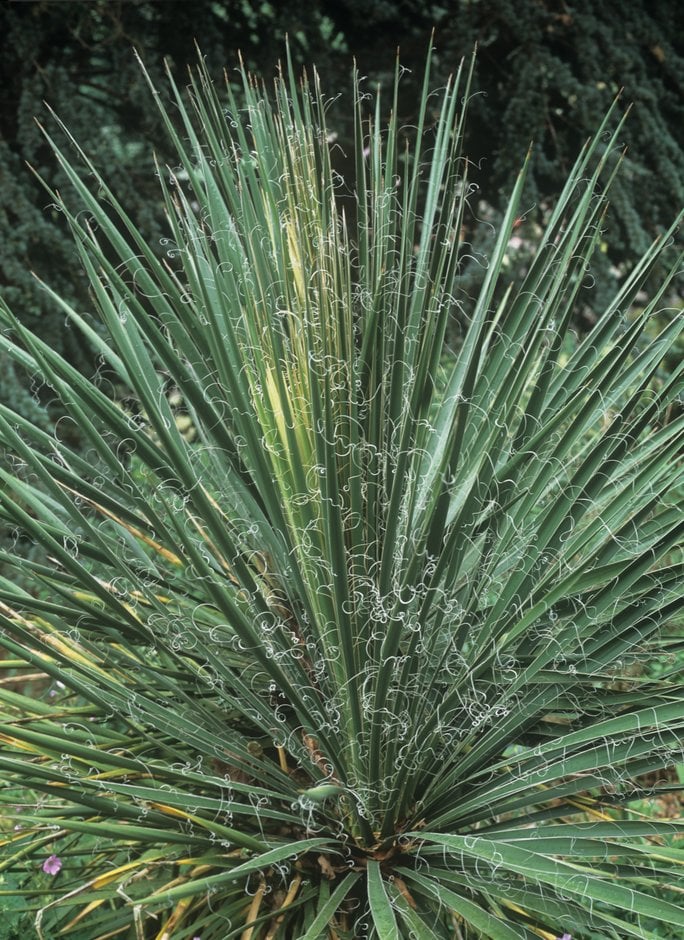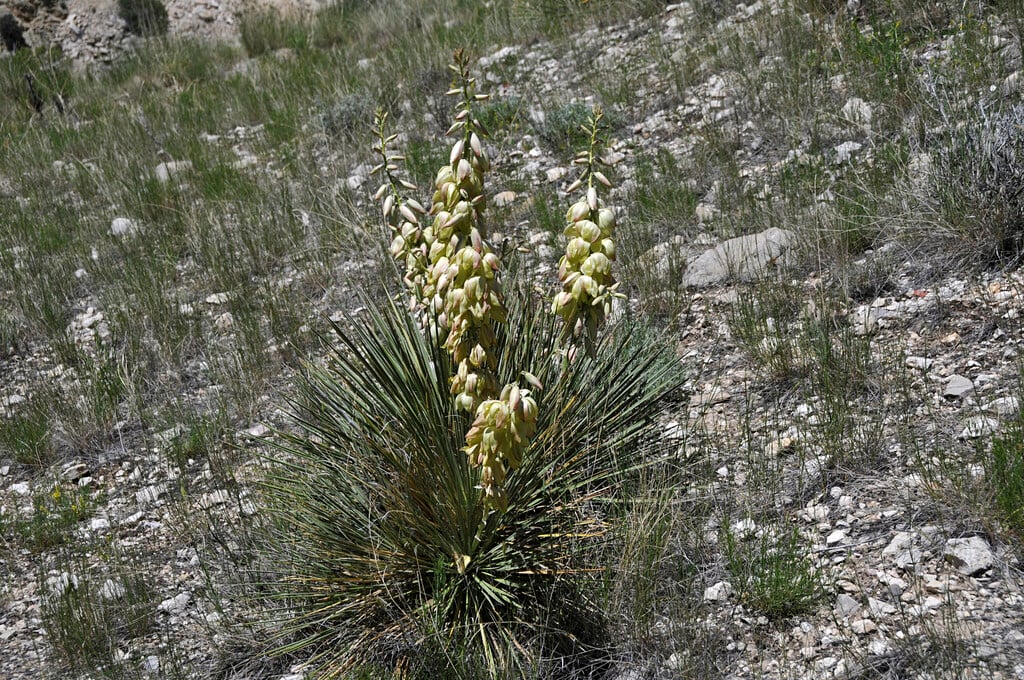Yucca glauca
soapweed
A shrubby, evergreen perennial to 80cm tall, forming rosettes of narrowly sword-shaped, grey-green leaves. Mature plants may produce 60cm spikes of large, cream-coloured flowers in late summer
Synonyms
Yucca angustifoliaSize
Ultimate height
1–1.5 metresTime to ultimate height
5–10 yearsUltimate spread
0.5–1 metresGrowing conditions
Moisture
Moist but well–drained, Well–drainedpH
Acid, Alkaline, NeutralColour & scent
| Stem | Flower | Foliage | Fruit | |
| Spring | Green | |||
|---|---|---|---|---|
| Summer | Cream | Green | ||
| Autumn | Green | |||
| Winter | Green |
Position
- Full sun
Aspect
South–facing or West–facing
Exposure
ShelteredDrought resistance
Yes Hardiness
H5Botanical details
- Family
- Asparagaceae
- Native to GB / Ireland
- No
- Foliage
- Evergreen
- Habit
- Tufted
- Potentially harmful
- Skin allergen. Wear gloves and other protective equipment when handling Pets (dogs, cats): Harmful if eaten - for further information and contact numbers regarding pets, see the HTA guide to potentially harmful plants
- Genus
Yucca can be evergreen perennials, shrubs or trees, with dense or loose rosettes of stiff, sword-shaped leaves and tall panicles of bell-shaped flowers
- Name status
Correct
- Plant range
- C North America
How to grow
Cultivation
Grow in any well-drained soil in full sun. Remove spent flower stems
Propagation
Propagate by seed sown at 18°C in spring, or remove rooted suckers in spring
Suggested planting locations and garden types
- Architectural
- City and courtyard gardens
- Coastal
- Mediterranean climate plants
- Patio and container plants
- Sub-tropical
- Low Maintenance
- Flower borders and beds
Pruning
No pruning required
Pests
Generally pest-free
Diseases
Generally disease-free
Love gardening
Sign up to receive regular gardening tips, inspiration, offers and more
View our Privacy Policy
Get involved
The Royal Horticultural Society is the UK’s leading gardening charity. We aim to enrich everyone’s life through plants, and make the UK a greener and more beautiful place.

